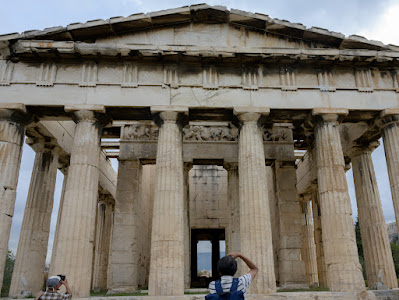Glorious Utah, Highway 12 a great road trip
We had some lunch after we had finished our walk and then set out on the next stage of the trip. We were taking Highway 12 out of Bryce and then north through the edge of Escalante National Monument, final destination Capitol Reef.
This road was carved by the Mormons who made their settlements along it's route. They kept animals, and grew crops, forging a living from the hard stony soil along the way.
 |
| Map courtesy of the Scenic Byway 12 Foundation |
The soil changed colour from red to white and became thin. We were at the edge of the Kaiparowits Plateau which extends nearly to the border with Arizona and the Colorado River. By Henrieville we stopped to look at an impressive mesa set in former fields that had been so hopelessly overgrazed by thousands of sheep, that they were left barren. The Taylor Grazing Act was signed by Franklin D Roosevelt in 1934, during the Great Depression, to license and restrict the amount of grazing in order to stop land erosion. In fact only 5% of the land in Utah could be used for farming, and in southern Utah this figure drops to 1%. The land around Henrieville was also used for mining coal in the early 1900's.
Travelling beyond Henrieville we came to the Blues/Powell Point Overlook. This looks across to the pink coloured Powell Point, rising to 10,188ft. Named after John Wesley Powell who surveyed this area in the late 1800's. This man, who was one-armed, was also the first white man to descend and survey the length of the Colorado River through the Grand Canyon.
The next stop on the road was to see an ancient Puebloan granary, perched high on a cliff. The Puebloans lived in the area hundreds of years ago, the ancestors of the Native American tribes. Pottery, rock art, arrowheads and other artefacts between 800 and 8,000 years old, found around here give a glimpse into their lives.
I have ringed the granary, which is beehive shaped and really difficult to spot.
We popped into the Escalante Interagency Visitor Centre which focusses on the ecology of the Grand Staircase-Escalante National Monument. Grand Escalante, almost inaccessible except for high clearance vehicles and walkers, did cover a vast area of 1,880,461 acres. Land which was the last to be mapped in the contiguous United States. It was originally designated protected land in 1996 by Bill Clinton, but in 2017 Trump reduced it's area by 47%, to allow for mineral extraction.
Outside the Visitor Centre were sugar feeders for humming birds, which had to be photographed.
Finally I will show a few pictures from the Escalante Petrified Forest State Park, which is situated a stone's throw from Highway 12. The ancient fossil trees lie on their sides by the Visitor Centre. Southern Utah has been a great collecting ground for fossils from the Cretaceous Period.






















Comments
Post a Comment